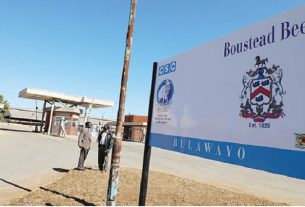The Australian Bureau of Statistics’ business indicators report, elements of which will feed into national accounts, also showed wages and salaries lifting by 2.6 per cent over the three months.
Economists were expecting a 1.8 per cent quarterly uptick in profits in the December quarter following a substantial fall in the September quarter.
But business inventories – stock on shelves and warehouses – fell by slightly more than expected, sinking 0.2 per cent over the quarter.
Speaking ahead of national accounts figures due on Wednesday, JP Morgan analyst Jack Stinson said inventories tend to translate more directly to real GDP and would offset some of the strength in company profits.
While there are still more growth-related indicators to come, the firm is leaving its estimates for the December quarter growth unchanged at 0.9 per cent quarter-on-quarter.
The business indicator results follow a softer-than-expected wage reading last week that had some wondering why Australian workers weren’t seeing pay improvements in line with other developed nations.
Wages lifted 3.3 per cent annually in the December quarter, falling short of the 3.5 per cent uplift expected by the Reserve Bank and markets.
HSBC chief economist Paul Bloxham said the prevalence of longer-term enterprise bargaining agreements in part explained the sluggish reaction to labour market pressures, with about 40 per cent of workers on these agreements that typically last around two or three years.
“But even the ones that are being reset – the leading edge agreements – are only running at 3.1 per cent,” he said.
The December quarter WPI figures also showed workers on individual agreements, which in theory should be more responsive to labour market tensions, were also a key driver of sluggish quarterly growth.
Mr Bloxham said there was little evidence of a “prices-wages spiral” as feared by the Reserve Bank, which is where increasing prices drive wages higher which in turn pushes prices higher again.
“Indeed, with high inflation, and strong nominal income in the economy, it’s more like a prices-profits spiral,” he said.
Mr Bloxham said lacklustre competition regulation in Australia was part of the problem.
“Strong demand seems to have allowed firms to maintain pricing power, push through supply-side cost increase to prices, with only a sluggish pickup in wages growth also containing labour costs – all supporting profits,” he said.
His comments follow analysis by the Australia Institute’s Centre for Future Work that found inflation would still be within the RBA’s target band of two to three per cent if Australian firms weren’t making excess profits for goods and services.



